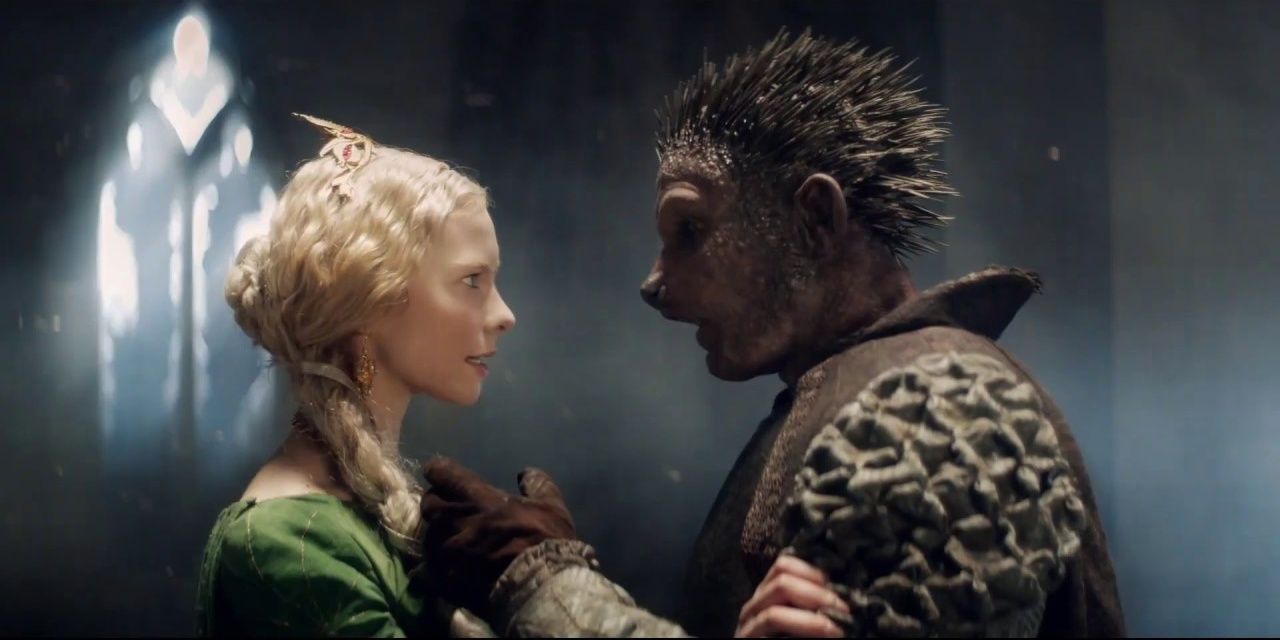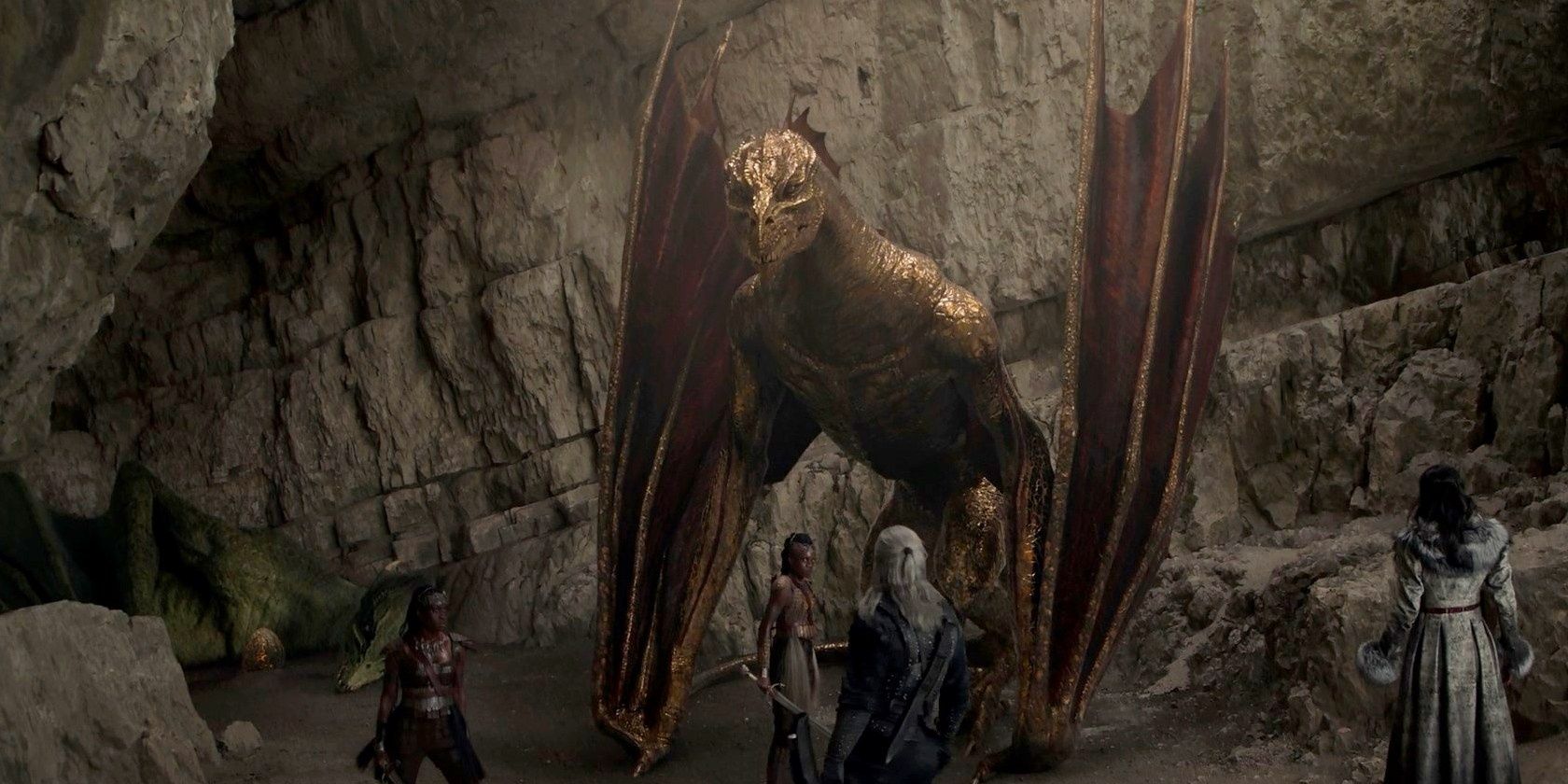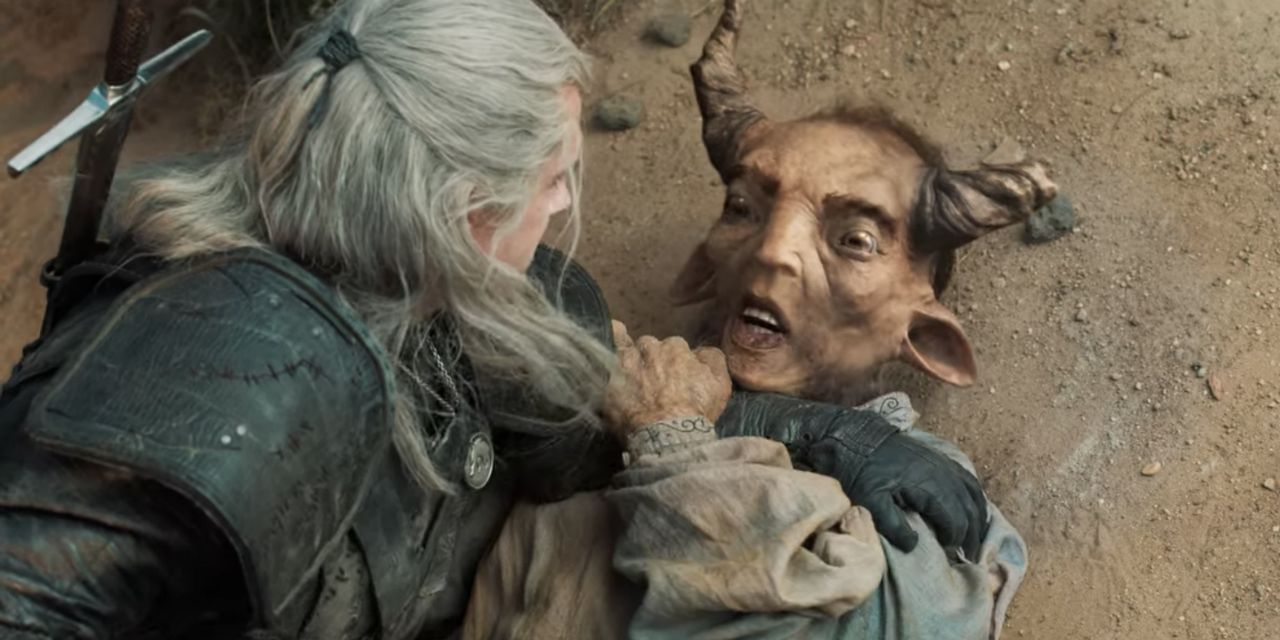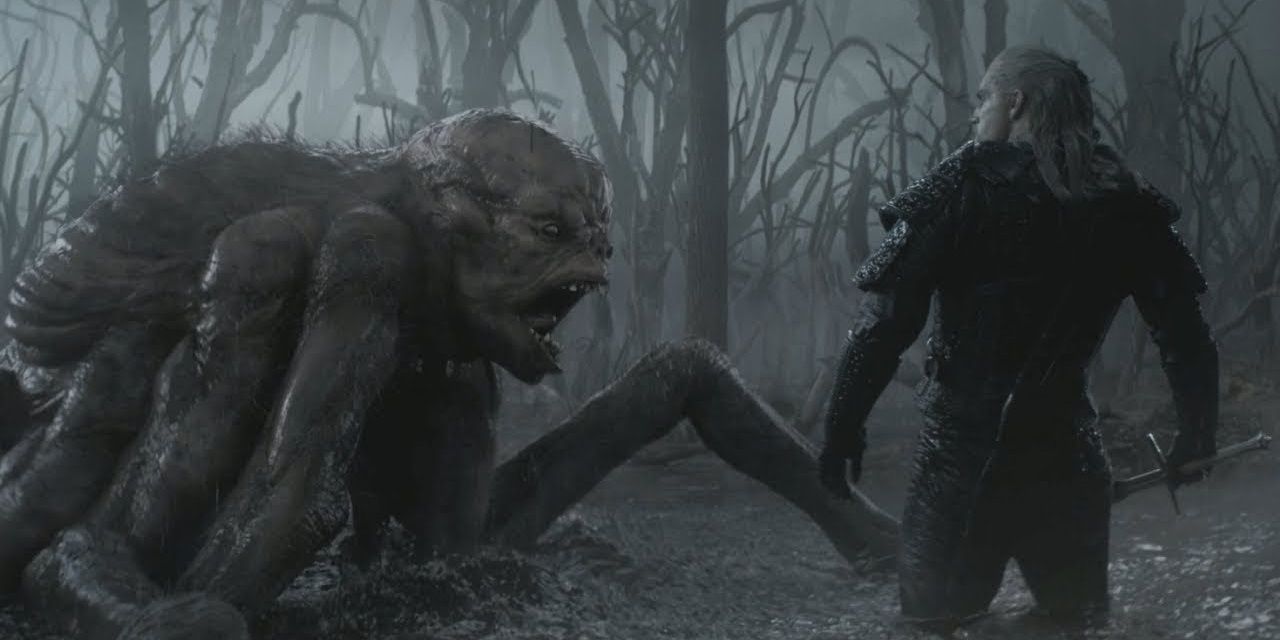The reviews for Netflix's The Witcher are mixed, some saying it's their new favorite show comparable to shows like Game of Thrones, and others saying that it's got cheesy effects and dialogue with gratuitous female nudity. But no matter the story, The Witcher has a certain charm about it. The characters are likable, the story is interesting enough, and some of the effects and cinematography look very retro and early 2000s inspired.
The use of practical effects and limited CGI (a choice insisted upon by show runner Lauren Schmidt Hissrich and production designer Andrew Laws) help add to the charm, similar to some of the shows that aired on the Syfy channel back when it was still called the 'Sci-Fi Channel'. There is obviously CGI in the show, but Hissrich said they tried to use authentic environments whenever possible. And practical make-up effects were used if possible.
There is definitely a certain dated looking quality to The Witcher, but the blend of practical effects and CGI are done in such a way that it still works. The creators tried to use limited CGI, but actor Henry Cavill pushed for his character Geralt to have more visual effects so that the audience would understand that he was using his Witcher Signs. About half of the time, the CGI is subtle and blends into the world without drawing too much attention. The other half of the time, the visual effects jump out at viewers because it is so obvious. This actually makes the entire show look like a mix of a modern fantasy series with something of a different era. By creating something a little older looking, it ironically makes the show stand out among other modern fantasy shows as something new and original.
There is a reason that the outfits in The Witcher looked too costume-like. This is because of the synthetic material that was being used. It gave the clothing a shiny, plastic look. Also, the Nilfgaardian army's armor was odd-looking and ill-fitting. Perhaps this is why a new costume designer named Lucinda Wright has redesigned many of the outfits including the Nilfgaard armor. But contrary to what some might say, this cheesy, almost fake costume look added to the charm of the show and kept with the lower budget '00s show aesthetic. The outfits in season 1 looked more like cosplay work, with an unfinished look as if someone had made a costume rather than fine clothing, and this helped to give The Witcher that low-budget indie feeling.
There are a ton of practical make-up effects in The Witcher. Anya Chalotra (who plays Yennefer) had to wear several prosthetics to achieve her hunchback look with a curved, deformed spine and crooked jaw. Geralt fights several monsters throughout season one, and some of those monsters were able to be done through practical effects. Torque the Sylvan was played by actor Amit Shah who said it took six hours for the artists to complete the look. Although this goat-human hybrid was slightly enhanced with CGI, the look was a practical effect, taking advantage of the art of special effects make-up in a time when it is slowly fading out of big blockbuster movies. Many TV series are keeping the love of practical old-school make-up effects alive, The Witcher being one of them.
The Witcher uses not only practical make-up effects, but also practical stunts. These stunts were performed by either a stunt double, a mannequin (in dangerous situations), or the actors themselves. There are also several fight scenes in The Witcher that have a dramatic style similar to that of the 2000 era style of filmmaking.
Stunt man and coordinator Vladimír Furdík choreographed the fighting sequences in season one of The Witcher, and his style is very classic which helped make this modern series feel more retro. Although, he will not be returning for season two as he is being replaced along with the costume designer from season one. Hopefully, whoever takes these artists' places will understand what the show has going for it in terms of style and keep that aesthetic brand.
The Witcher can be a little cheesy at times, meaning it sometimes appears slightly inauthentic, silly, cheap, and melodramatic. But instead of being a turnoff, all of these aspects about The Witcher make it even better. When Geralt is fighting the Kikimora (the eight-legged swamp monster) the visual effects are very stylized and exaggerated, similar to the effects in one of Syfy network's early 2000s shows titled Stargate Atlantis (with Jason Momoa of Game of Thrones and Aquaman).
The cast of The Witcher also has a similar style of line delivery to the cast of Stargate Atlantis as well, and the dialogue in both shows has a very over-the-top dramatic feel. Another show that has a very similar tone and style to The Witcher is a Syfy channel miniseries titled Tin Man starring Zoey Deschanel. From the trailer alone, it shows just how similar The Witcher is to a 2000s series.
Season two of The Witcher doesn't have a final release date, but will be dropped sometime in the last three months of 2021. Though there will be some changes, especially if there had been a budget increase due to popularity, hopefully, the show will keep its charming aesthetic. In the meantime, fans can watch shows with similar tones like Tin Man or any other 2000s sci-fi fantasy series.




